

Hide/Show
8:00 a.m.–9:45 a.m. | Track: General
Daniel Garrett, CAE
Show description

This ceremony recognizes the “doers” in the profession, from students to long-established practitioners. Be there and applaud your peers. Today it’s them; tomorrow it could be you!
9:50 a.m.–10:30 a.m. | Track: General, Adult Acute Care | CRCE: 0.66
Wes Ely, MD, MPH
Show description

This presentation will describe the difficulties that we as health care professionals are currently experiencing in our desire to provide the best care to ICU patients in the midst of the COVID pandemic. I will explain a scientifically proven method for amplifying humanism and dignity so that we can work, one patient at a time, to resurrect. I will use the power of human story to identify aspects of patient suffering that are epidemic within the pandemic and offer hope and strategy for rebuilding what was lost amid the pandemic mayhem and discuss a path forward.
10:45 a.m.–3:00 p.m. | Track: General
Sheri Tooley, BSRT, RRT, RRT-NPS, CPFT, FAARC
Carl Hinkson, MSc, RRT, RRT-ACCS, RRT-NPS, FAARC
Show description
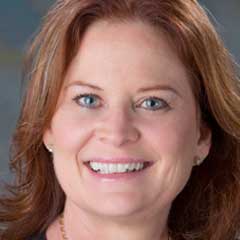

The AARC President and President-Elect open the Exhibit Hall during the annual ribbon cutting ceremony at 10:45 a.m.
As the gold standard of all respiratory care meetings, AARC Congress 2022 presents to you all the manufacturers and suppliers in the industry. The Exhibit Hall offers attendees an opportunity to see, touch, and manipulate the latest technology in the field and have clinical conversations with manufacturer representatives. Don’t miss this great opportunity!
11:00 a.m.–12:00 p.m. | Track: General
Dana Evans, MHA, RRT, RRT-NPS, FACHE
Show description

This lecture will provide tips from previous Congress experiences to help make the most of this year's meeting including lessons learned, prioritizing lectures, and take-home highlights.
12:05 p.m.–12:40 p.m. | Track: Clinical Practice | CRCE: 0.58
Felix Khusid, BSRT, RRT, RRT-ACCS, RRT-NPS, RPFT, FAARC
Show description

The respiratory care profession has evolved immensely over the years—from on-the-job trained technicians to highly-skilled practitioners. As respiratory therapists evolved, so did the technology used for patient care, such as mechanical ventilators. Join this lecture to reflect on how our profession and technology simultaneously evolved over the years—and consider how knowing this history will prepare us for the future.
12:45 p.m.–2:40 p.m. | Track: Clinical Practice | CRCE: 1.50
Show description
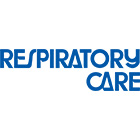
Researchers present the results of their work. Authors briefly present their findings and engage in an open discussion with the attendees.
Supported by an unrestricted educational grant from
12:45 p.m.–2:40 p.m. | Track: Clinical Practice | CRCE: 1.50
Show description

Researchers present the results of their work. Authors briefly present their findings and engage in an open discussion with the attendees.
Supported by an unrestricted educational grant from
1:30 p.m.–3:35 p.m. | Track: Diagnostics
1:30 p.m.–2:05 p.m. | CRCE: 0.58
Tom Cahill, MS, RRT, RRT-NPS, FAARC
Show description

Using Advanced Cardiopulmonary Exercise Testing (CPET Level-3), we can completely describe the cardiovascular and pulmonary pathophysiology in a patient with unexplained dyspnea or exercise intolerance. The CPET Level-3 is done with pulmonary artery and radial artery catheters to provide an assessment of exercise capacity and defines the detailed contributions of any cardiac, pulmonary mechanical, pulmonary vascular, hematologic, muscular, or neurologic limitations. The patient undertakes a “ramped protocol test” on a cycle ergometer while on a 12 lead ECG and pulse oximeter. A metabolic cart mouthpiece and tubing are used to measure the ventilation and pulmonary gas exchange. The CPET Level-3 allows accurate measurement of pulmonary arterial and cardiac filling pressures during exercise. It can be most helpful in characterizing an abnormal response of the circulatory system to exertion. Through integrated measurements of hemodynamics, ventilatory equivalents, and cardiac function, the cause of unexplained dyspnea can be determined up to 99% of the time.
2:15 p.m.–2:50 p.m. | CRCE: 0.58
Matthew O’Brien, RRT, RPFT, FAARC
Show description

This discussion will focus on the newer studies and guidance documents related to race and pulmonary function reference values. Recommendations for future use of reference equations will be made.
3:00 p.m.–3:35 p.m. | CRCE: 0.58
Carl Mottram, BA, RRT, RPFT, FAARC
Show description

This session will focus on the recently released ERS-ATS document on the Interpretation of Technical Standards. A review of the history of technical standards with the current update will be discussed. Implications for the individual PFT laboratory will also be discussed.
1:30 p.m.–3:35 p.m. | Track: Leadership & Management
1:30 p.m.–2:05 p.m. | CRCE: 0.58
Andrea Espinoza, MD, FCCP, DipABLM
Show description

As a result of the COVID-19 pandemic, health care professionals are experiencing considerable burnout and mental health issues. The presenter has considerable experience in the areas of mental health and burnout and will outline coping strategies for finding purpose as caregivers on pulmonary and critical care teams.
2:15 p.m.–2:50 p.m. | CRCE: 0.58
Kyle Rehder, MD, CPPS, FCCM
Show description

This presentation will discuss what causes burnout, including the psychology of burnout in addition to what are the key drivers for burnout among RTs. Strategies and tools to increase individual resilience and organizational interventions will also be discussed.
3:00 p.m.–3:35 p.m. | CRCE: 0.58
Jeremy Parks, MBA, RRT
Show description

Resiliency, Burnout, Compassion Fatigue have become buzzwords over these past two years. Yet, they’ve all been topics of interest for many years, especially in health care. In fact, Jeremy used to cringe at hearing those words—as, most likely, did many of you—knowing a long, overly-positive lecture would follow these words, filled with fluff and very few things one could use or apply to their life. This lecture is not that. This lecture combines Jeremy’s life experiences living with cystic fibrosis and the resiliency training he’s gone through to give real-life, applicable techniques to improve your own resilience and that of your team. Attending this lecture will leave the audience with the tools needed to sustain and combat those moments in life where resiliency is challenged. So, come and gather the tools and arsenal you need to overcome the valleys of life and live a resilient, motivated, happier life.
1:30 p.m.–3:35 p.m. | Track: Adult Acute Care
1:30 p.m.–2:05 p.m. | CRCE: 0.58
Lynda Goodfellow, EdD, RRT, FAARC
Show description

The AARC was one of the first professional organizations to publish CPGs and the commitment dates back more than 30 years. This presentation will review the history of CPGs published in Respiratory Care and secondly, focus on the future direction of evidence-based CPGs.
2:15 p.m.–2:50 p.m. | CRCE: 0.58
Brady Scott, PhD, RRT, FAARC
Show description
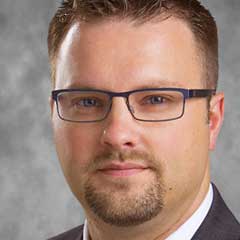
This presentation will review the new CPGs that pertain to adult respiratory care. The recommendations made, and the level of evidence for the recommendations, will be discussed.
3:00 p.m.–3:35 p.m. | CRCE: 0.58
Natalie Napolitano, MPH, RRT, RRT-NPS, FAARC
Show description

This presentation will review the new CPGs that pertain to neonatal/pediatric respiratory care. The recommendations made, and the level of evidence for the recommendations, will be discussed.
1:30 p.m.–2:50 p.m. | Track: Adult Acute Care
1:30 p.m.–2:05 p.m. | CRCE: 0.58
Sara Mirza, MD, MS
Show description

This lecture on arterial blood gas interpretation will focus on complex acid-base disturbances. The presenter will describe important concepts related to these disturbances including primary causes, expected compensation, and clinical interpretation.
2:15 p.m.–2:50 p.m. | CRCE: 0.58
Robert Brent Murray, MS, RRT
Show description

This presentation will address using radiology in a mechanical ventilation course. While chest x-rays are the most common radiological exam, computerized tomography, ultrasound, and magnetic resonance imaging can be especially useful in determining mechanical ventilation effectiveness. Exploration of imaging will be reviewed during this presentation. Common disorders, such as over and under ventilation, pulmonary edema, pleural effusion, and trauma, will be reviewed to integrate mechanical ventilation techniques.
1:30 p.m.–5:05 p.m. | Track: Adult Acute Care
1:30 p.m.–2:05 p.m. | CRCE: 0.58
L. Felipe Damiani, PT, MSc, PhD
Show description
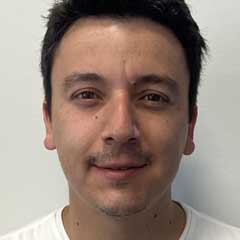
The paradigm shift to low or normal tidal volume and minimizing plateau pressures during mechanical ventilation of subjects with ARDS began with the publication of the ARDSnet ARMA trial in 2000. More recently, attempts have been made to normalize volume and pressure to the available baby lung in ARDS. These concepts of driving pressure, work, power, and energy transmission have begun to demonstrate superior lung protection compared to a tidal volume of driving pressure alone. This lecture will define and discuss these measures and highlight potential changes to clinical practice.
2:15 p.m.–2:50 p.m. | CRCE: 0.58
Ewan Goligher, MD, PhD
Show description

Ventilator induced diaphragmatic dysfunction (VDD) has been demonstrated to occur quickly in mechanically ventilated patients and is a common finding. Efforts at minimizing VIDD include minimizing sedation and encouraging spontaneous efforts. Timing is the key. More recently, electrical stimulation of the diaphragm, either transvenous, transabdominal or via implanted electrodes, has been implemented. Early pre-clinical work has been promising. Selection of subjects, duration of stimulation, timing and strength of stimulation all require further elucidation. Are these techniques important for ventilator liberation and will duration of ventilation be altered? These issues will be discussed for this promising technology.
3:00 p.m.–3:35 p.m. | CRCE: 0.58
Timothy Girard, MD, MSCI
Show description

Mechanical ventilation has always been associated with hemodynamic complications which can lead to end organ dysfunction. These are commonly thought of in terms of renal dysfunction and cardiac embarrassment. More recently, muscle weakness and diaphragmatic dysfunction are linked to mechanical ventilation. A hot topic is the issue of brain-lung cross talk. How do breathing, mechanical ventilation and airway pressures impact brain function? The emerging data is compelling and respiratory therapists should appreciate these issues and understand the mechanisms, which will all be discussed in this presentation.
3:45 p.m.–4:20 p.m. | CRCE: 0.58
Eduardo Mireles-Cabodevila, MD
Show description

Esophageal manometry and determination of transpulmonary pressure have been important physiologic principles known for decades. Esophageal pressure can be used to monitor the work of breathing and the impact of the chest wall. The use of esophageal pressure has been particularly useful in obesity and chest wall disorders. With the advent of driving pressure and mechanical power — where does esophageal monitoring stand? This talk will describe the current role of esophageal monitoring during mechanical ventilation.
4:30 p.m.–5:05 p.m. | CRCE: 0.58
Kyle Rehder, MD, CPPS, FCCM
Show description

Extracorporeal support has been touted as a potential treatment for ARDS since 1970. Improvements in technology have made ECMO possible in nearly any setting and the term “ECMO Center” has lost some clout. Outcomes and bleeding complications from ECMO continue to push ECMO to rescue therapy. Amongst the most contentious aspects of ECMO is how to set the ventilator. What are the roles of PEEP, lung rest, mechanical power, and even prone position during ECMO? These issues will be addressed.
3:00 p.m.–3:35 p.m. | Track: Adult Acute Care | CRCE: 0.58
Tim Gilmore, PhD, RRT, RRT-ACCS, AE-C
Show description

This presentation is designed to emphasize the current best, evidence-based practice in administration of common respiratory care for patients with either acute or chronic cardiovascular disease states. Emphasis will be placed upon physiologic and clinical considerations when administering both inpatient acute and critical care to high-risk patients with a history of cardiovascular compromise.
3:15 p.m.–5:10 p.m. | Track: Leadership & Management | CRCE: 1.50
Show description

Researchers present the results of their work. Authors briefly present their findings and engage in an open discussion with the attendees.
Supported by an unrestricted educational grant from
3:45 p.m.–4:20 p.m. | Track: Education | CRCE: 0.58
Debra Kasel, RRT, RRT-ACCS
Deborah Patten, MA, RRT, CHSE
Show description


Students frequently comment on how they feel under-prepared to deal with difficult situations in the health care setting. To address this issue, respiratory faculty from St. Paul’s College, MN, and Northern Kentucky University, KY, developed a workshop for their students to learn and practice the PEEER© Communication model as a structured method for interacting in difficult situations. This presentation recognizes the challenges in teaching effective communication methods to respiratory care students in the online setting. Presenters will discuss the development of the workshop and review follow-up student evaluations. Attendees will identify specific online methods to engage students from different universities; compare ineffective and effective communication techniques using the PEEER communication model; and practice the elements of the PEEER model. PEEER stands for: Plain Language, Engagement, Empathy, Empowerment, and Respect.
3:45 p.m.–4:20 p.m. | Track: Leadership & Management | CRCE: 0.58
Scott Pettinichi, MEd, RRT, RRT-NPS, AE-C
Show description

Creating a culture of collaboration promotes a comfort zone where team members can effectively share clinical observations and concerns they may have. This presentation will include a comprehensive discussion of methods employed to foster this change in culture. The presenter will provide tools and resources for participants to use at their workplace.
3:45 p.m.–4:20 p.m. | Track: Neonatal/Pediatrics | CRCE: 0.58
Katlyn Burr, RRT, RRT-NPS, AE-C
Show description

Unplanned extubation (UE) leads to increased morbidity and longer length of stays. Strategies to reduce the incidence of UE are critical. This presentation will review common contributing factors associated with UE and the impact implementation of a prevention bundle has on UE rates in critically ill pediatric patients.
3:45 p.m.–5:05 p.m. | Track: Diagnostics | CRCE: CRCE
3:45 p.m.–4:20 p.m. | CRCE: 0.58
Jose Rojas, PhD, RRT, RPFT, FAARC
Khamron Michaels, MHA, RRT
Show description
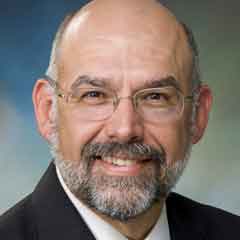

This presentation reviews the acute effects of COVID-19 infection on pulmonary function in subjects requiring mechanical ventilation and chronically ill survivors who continue to experience dyspnea and fatigue. The presentation will summarize the changes in compliance, resistance, and PaO2/FiO2 ratio in subjects who require mechanical ventilation for at least five days (survivors and non-survivors). In addition, the presentation will summarize the longitudinal changes in spirometry and oscillometry in subjects who continue to complain of dyspnea and fatigue.
4:30 p.m.–5:05 p.m. | CRCE: 0.58
Carl Mottram, BA, RRT, RPFT, FAARC
Show description

The current COVID-19 pandemic has resulted in many safety concerns for pulmonary function laboratories and pulmonary rehabilitation programs. Practical guidelines for the provision of safe programs from patient and provider perspectives will be discussed.
4:30 p.m.–5:05 p.m. | Track: Neonatal/Pediatrics | CRCE: 0.58
Shawna Strickland PhD, CAE, RRT, RRT-NPS, AE-C, FAARC
Show description

Neonates are a vulnerable population, and, in some cases, medical interventions provided in the neonatal ICU may have no overall benefit to the infant. The impact of medically futile interventions extends not only to the patient and family but also the healthcare providers. This presentation will explore the concept of medical futility in the neonatal ICU and its impact on those who care for this population.
4:30 p.m.–5:05 p.m. | Track: Education | CRCE: 0.58
Jasmine Brown, MS, RRT, RRT-ACCS, CHSE
Nancy Guyse, MS, RRT, RRT-NPS, AE-C
Show description
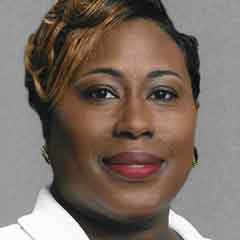

The demand for neonatal respiratory therapists continues to be an area of need within the profession. Working with neonates is a specialized skills set that is not typically nurtured in an adult focused curriculum. This traditional structure can unintentionally create fear for the student to care for the neonatal population. How can a program help meet the need, without consuming credit hours? This presentation will showcase a matrix for expanding neonatal didactics that can be customized for any curriculum. A neonatal track can potentially bridge the gap between classroom, clinical skills, and the student’s confidence to care for the tiniest of patients post-graduation.
4:30 p.m.–5:05 p.m. | Track: Leadership & Management | CRCE: 0.58
Sara Mirza, MD, MS
Show description

Successful Medical Directors take the time to listen to their stakeholders and their teams, which enables them to connect and build trust. The role of a medical director for the respiratory care team has an impact on the ability to not only build trust with the team, but also elevate the RT professional’s advancement of their skills, which ultimately has a positive impact on patient outcomes. This presentation will review how leveraging the medical director to advocate for the advancement of RT skills will have a positive impact on patient outcomes.
There are no sessions that match your display preferences.